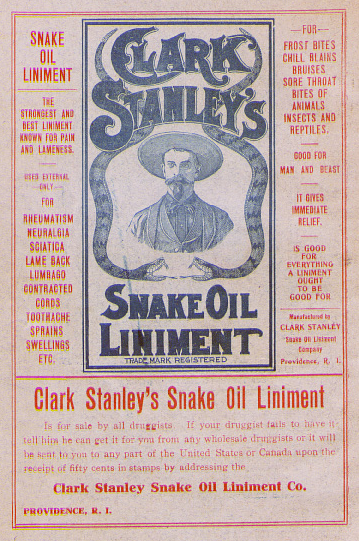Eduwonkette (if you’re interested in the cause of education, stop reading so many philanthropy blogs and subscribe to Eduwonkette) links to an exciting-sounding article about a series of innovative charter schools. Imagine how excited I get by a passage like this:

“On graduation rates, on test scores, on teacher pay — on just about anything you associate with school reform — we have kicked the district’s butt. There’s nobody in America who has taken the same kind of kids in the same kinds of areas and the same dollars and narrowed the achievement gap like we have.” …
It’s been six years since the 47-year-old Barr launched his personal variant on the charter-school formula, Green Dot Public Schools, then lured 500 kids (and their supportive parents) away from nearby — and academically disastrous — Lennox High School in Boyle Heights. To the consternation of L.A. Unified officials, Barr created Animo Leadership Charter High School with the aim of showing what he could do with $1,200 less per student than L.A. Unified and most big-city districts in California spend. His goal was to accomplish what California schools have failed to achieve for nearly 30 years: turn functionally illiterate and grossly undereducated urban freshmen into literate, math-competent, college-ready graduates who can compete with the graduates of rich-kid Harvard-Westlake.
Yeehaw! Let’s go! You’re right, I haven’t seen any other school that can convincingly demonstrate it’s pulled off this incredibly difficult task! How did you do it? Is it the hiring practices, the classroom protocols, what’s the secret?
Oh, and by the way, what is the actual evidence that you’ve closed the achievement gap for your students? From the way you talk, it sounds like you’ve just humiliated the public system – so you’ve been following your kids through college and seeing that they turn out just as well as Harvard-Westlake kids, or what?
Here it is:

So far, early returns from his 10 schools show a graduation rate double that of LAUSD’s sad results. While the data is too new to be earth-shatteringly conclusive …
Oh. Hrmm. Early returns … not conclusive … also, only graduation rates are mentioned, and of course graduation rates are one of the easier metrics to play fast and loose with …
And – oh dear –

Duffy has claimed that Barr selectively handpicks only four students out of every 10 in the neighborhoods where he opens a new school … ““We know they have the ability to [skim the cream]. We just don’t have any way of verifying what they do.”
So, we have a school that doesn’t admit all comers, we’re not sure exactly how they choose to admit students, they could be creaming and they could not be, and whether or not they are, their graduation rates might represent progress, lowered graduation requirements, or a fluke … and people are celebrating with grants and editorials about the end of the achievement gap.
 In other words, I just re-read the ol’ article about NYC charters, pretty much word for word.
In other words, I just re-read the ol’ article about NYC charters, pretty much word for word.
My favorite part of this one is this quote: “‘Eli Broad doesn’t write a check if we are marginally better,’ Barr concludes. ‘People don’t write editorials about us because we’re not successful.’” I beg to differ. Apparently, people write checks and editorials because in the absence of any school conducting true randomized trials and thorough followup, a couple preliminary and questionable stats plus some flashy rhetoric is what passes for both news and hope.
That’s where we’re going to be stuck until and unless an education charity not only figures out how to make a difference, but makes a good, methodologically sound demonstration of it. In the meantime, giving to an education charity with poor self-evaluation seems like giving to a cancer research laboratory with no pens, paper or computers.

 Of course you would. And of course you can’t.
Of course you would. And of course you can’t. The big key here, to me, is randomization. Trying to make a good study out of a non-randomized sample can get very complicated and problematic indeed. But if you separate people randomly and check up on their school grades or incomes (even if you just use proxies like public assistance), you have a data set that is probably pretty clean and easy to analyze in a meaningful way. And as a charity deciding whom to serve, you’re the only one who can take this step that makes everything else so much easier.
The big key here, to me, is randomization. Trying to make a good study out of a non-randomized sample can get very complicated and problematic indeed. But if you separate people randomly and check up on their school grades or incomes (even if you just use proxies like public assistance), you have a data set that is probably pretty clean and easy to analyze in a meaningful way. And as a charity deciding whom to serve, you’re the only one who can take this step that makes everything else so much easier.